#( rootworking. )
Explore tagged Tumblr posts
Text
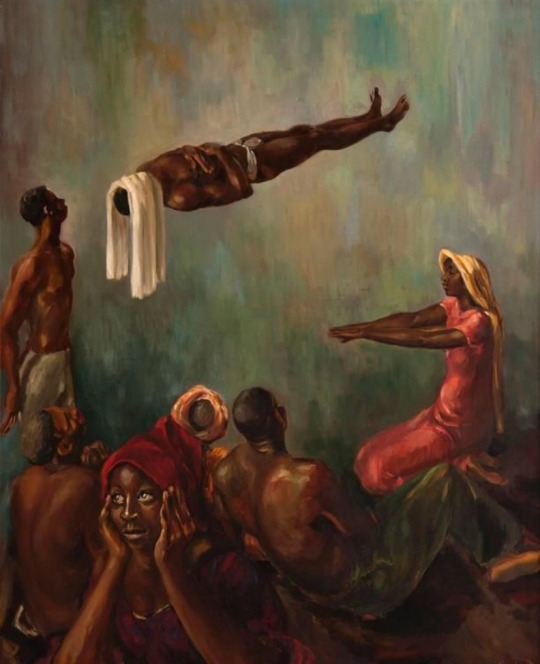

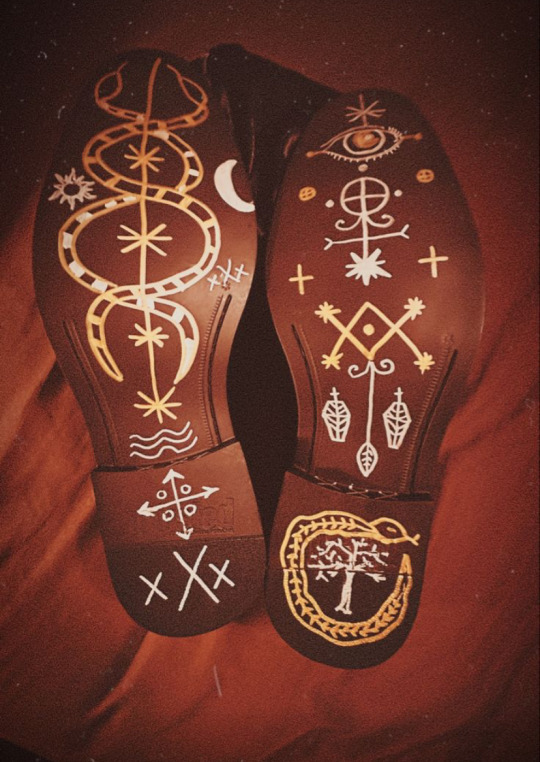

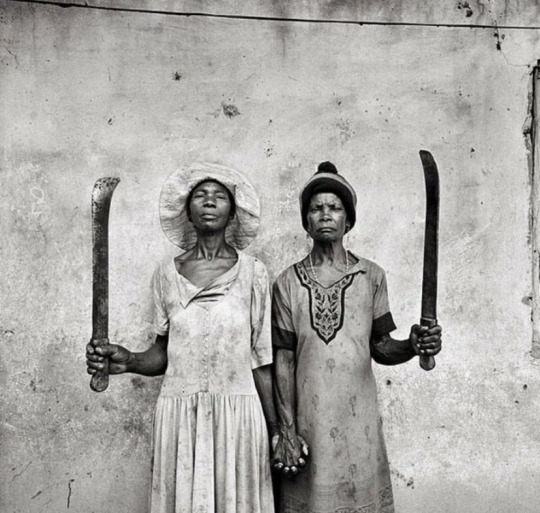

HOODOO: “If freedom don’t ring, these “roots” gonna sing!!!!”
#black spirituality#hoodoo#rootwork#ancestor veneration#vintage#black men#black women#magic#black girl magic#aesthetic#snakes#ancient egypt#juneteenth#african history#african american
3K notes
·
View notes
Text

Easy Homemade Florida Water Recipe No.1 Enchant your herbs using the following tags.
Lavender/Lavanda - for cleansing, protection and peace of home, mind, body and spirit
Orange/Naranja - for spiritual cleansing, to attract good fortune and luck, removal of stagnant energy.
Rosemary/Romero- for cleansing, protection
Cinnamon/Canela - for speed, to attract good luck and fortune
Cloves/Clavo - for domination of adverse conditions, to attract good luck and fortune, to remove negativity and purify spiritual vibrations
Mint/Mentha - for purification of energy, cleansing, protection and the attraction of good luck and fortune
Tangerine/Mandarina - for purification, to attract positive energy, uplift and bring abundance, to clear away negative influences
Lemon/Limon - to purify, cleanse and promote clarity
Mix together in a decent sized bottle, using distilled water and one cup of cheap high proof Vodka or Rum as a preservative, charge on your altar, in the moonlight or using your prayers.
Let sit for a week & Voila!
#hoodoo#florida water#brujalife#brujeria#rootwork#conjure#black femininity#black spirituality#haitian vodou#voodoo#agua de Florida#santeria#palo mayombe
280 notes
·
View notes
Text
i cannot stress enough how important a relationship with your ancestors is, especially now.
a white candle, a cup of water and 15 mins is really all you need.
place your white candle and glass of water on your altar. your altar can be anything: the top of a dresser or nightstand, a mantle, a small table, a window sill, anything.
light your candle and call on your ancestors. if you know their names, call them out if you want. or just say “to my ancestors, known and unknown, i welcome you here now. i look forward to getting to know you.”
then take a couple minutes and just listen. you may notice a change in the temperature, or a song stuck in your head. maybe you don’t hear or feel anything at all. that’s okay. it takes time to get to know someone in the physical, so it makes sense that it take some time in the spiritual as well.
spend a couple minutes once a week, talking to and listening for your ancestors. start with 2 minutes, then 5 etc. refresh the water once a week. increase the number of times you’re at your altar slowly. you don’t have to go all out all at once, trust me.
after a while you can start giving different offerings like: coffee, tea, likka, tobacco, dragons blood, food ect. again, don’t go all out all at once.
personally, since i’ve started over, i only give big offerings on first sunday. i make a nice sunday dinner complete with dessert for my ancestors the first sunday of every month. i struggle with my mental health and having low energy and this works for both me and my ancestors. figure out what works for you and yours.
also, remember your ancestors are more understanding than we think. you may think they don’t understand queerness, mental illness, disability etc but i promise you they do. you are not the first and you won’t be the last.
okay, i think that’s it for now. feel free to add to this post some more tips for ancestor work
190 notes
·
View notes
Text
ADVICE FOR BEGINNER PRACTITIONERS

I'm a generational witch and have worked in the craft for around 10 years, with some experience in conjure. I'd like to disclaim that I am still fairly young - but I feel as though I've gathered a decent well of knowledge. And thus, as I connect with others in this community, I'd like to share it.
1. Know what type of work you're actually doing.
"Witchcraft" is a blanket term often used to describe any type of ritualistic manifestation, however, not all of what you may regard as 'spellwork' is considered to be witchcraft. You see, at their core, any spells, workings, or prayers are examples of folks working with energy to achieve a desired outcome. Many religions that denounce or don't explicitly link themselves to witchcraft manipulate energy in their practices in very similar ways to witches themselves. However, these religions still do not consider what they're doing to BE witchcraft - this could be because of stigma or a variety of different things, but it's usually important to respect this because if you ignore the origins of your work, then you'll miss important cultural context - and the history of any items used or deities called upon DOES affect the results of any ritual significantly. There are also closed practices in which only certain people can work with a type of energy because of heritage, location, age, gender, etc. Participating in closed practices when you are not invited is not only disrespectful, but it can also be extremely dangerous because you can anger the gods of that practice and spirits that have been venerated for thousands of years. This can result in horrible misfortune.
So, to summarize, when you're conducting rituals created by other people or working with gods or spirits venerated by others, it is extremely important to learn the history (mythos, examples of previous use, etc) and cultural background of what it is that you're doing. It may take longer, but your results will be better and you also won't accidentally put yourself in harm's way. This doesn't so much apply to extremely simple things like lighting a white candle to honor a recently passed relative, because it's common knowledge that thousands of cultures around the world have done that for years. But if when researching rituals and whatnot you find something completely unfamiliar to you, do NOT try and work with it until you've looked into it more.
2. People Lie
There is a small number of people who knowingly practice witchcraft or similar works. There is an even smaller percentage of people who tell the truth about their experiences and are skilled enough to make spells work consistently. It is easy to become a 'real' witch, but we are rare in Western society for a variety of reasons - a big one being that it takes lots of time and research. Many people who claim to be psychics or 'witches' are either scam artists, in psychosis, or are too ignorant to realize the errors in their craft that are preventing their spells from working - and they brag about them anyhow as if they do work. It is important to understand that, while you are learning about witchcraft or consuming content related to it, people are going to lie to you. Many people will exaggerate their anecdotes or just makeup stories altogether, either for recognition or to sell a product. On the other hand, witchcraft is WEIRD. Things that shouldn't be possible become more common, and it opens your eyes to the fact that some things just can't be explained with science. In my personal experience, at the beginning of my craft, my spells would manifest slowly as odd coincidences, but now I can control the timing of my work much better, and - since I am more experienced - the results are more effective and shocking than they were five years ago. So, in conclusion, some things that may sound like lies can actually reveal themselves to be true - and the world is actually that much stranger than you thought, while other things that seem fictitious just are. Thus, it's important to ensure you trust any source you may be getting information from - even from me, your dearest Nicasia.
3. Your results aren't going to be consistent at first.
This kind of piggybacks off of the last piece of advice, but when you're a beginner witch without any enchantments already active for whatever reason, it's unlikely that everything you do is going to work - and that is okay. I remember finding this very discouraging when I first started because I thought that if my spells didn't work, it meant that witchcraft itself wasn't real and everything I was doing was stupid. But spellwork is a very old and complicated practice, so when you're a beginner, it can be easy to make mistakes. Like I've said, as I've become more experienced, my spells are more effective. I'd say they work about 85% of the time now as opposed to my former 20, and the sole reason for this is that I'm more knowledgeable. Practice makes perfect, and even the elders can fail sometimes. Spells can fail for a variety of reasons. It can be because of the moon phase, your poor mental health or lack of subconscious belief, unstable energy, previous blocks, etc. Sometimes you can do everything perfectly and your ancestors or spirit guides just won't let something manifest because it's not meant for you - even to the point of your supplies going missing out of the blue. What's important is that you keep trying.
**If you don't have mental health issues, are currently living a privileged lifestyle, or have never been cursed before - this next part likely doesn't apply to you, but certain people will need to do uncrossing or road-opening work to begin spellwork. People can bind your energy, and thus your ability to do witchcraft, and you can even do this to yourself by overthinking too much. Many witches preach beginners learning protection magick first, and I agree that's usually a good idea, but there are cases where you gotta make sure your gates are open before you can receive iykwim.
4. You Don't Need to Spend Money to Have Effective Spells
As with all 'cool people' things, witchcraft is done best when you get creative. In Hoodoo / Conjure, a closed practice of African American folk magic, there's an emphasis on the fact that slave magick was created by those who literally had nothing and just had to learn to work - in secret - with the energy of what they had on hand. It is 1000% doable to do witchcraft without investing in expensive crystals, oils, and herbs. Don't get me wrong, the more you put into your craft the more you can get out - whether it be effort or money, and sometimes expensive supplies are genuinely just better. But if you have a strong intention and know how to call upon the right spirits, you can literally do witchcraft just by thinking. Don't limit yourself by thinking that since you can't afford to buy the angelica root in a spell posted online, you have no chance of doing it successfully. That's when you research substitutions and build upon that ritual to your needs until you finally have your own spells.
5. People are assholes
People suck. When and if you choose to tell people about your craft, you're going to get mixed reactions. Be very careful about who you tell, because witchcraft is very misunderstood and misunderstanding leads to hate and violence. Some people may even respect your work but inform you they don't believe in it: Which is fine, but this may affect your confidence in witchcraft and spells. Thus, sometimes, it's better to keep things to yourself. I'm a very anxious person, and many of my personal friends don't even know I'm a witch for this exact reason. I've found that my craft works better when I don't tell people about it. When I do workings concerning other people, even if they've specifically asked me to do them, I often won't tell them when exactly I conduct their spell. This is because I don't want them overthinking and second-guessing themselves, therefore closing themselves off to receive any new energy.
Opinions and facts matter, remember that. But above all, have confidence in yourself and your craft - and of course, stay safe.
- Nicasia
#witchcraft#witchblr#advice#shadow work#spirituality#witchcore#conjure#rootwork#southern gothic#new orleans#tarot
125 notes
·
View notes
Text

If someone claims to practice Hoodoo but says they don't pray, then they are not truly practicing Hoodoo. Don't let the trend followers on social media make you believe that prayer is bad. Praying as a beggar is bad because it spiritually opens a portal, and begging is a form of low vibrational energy. This low vibrational energy allows spiritual leeches and parasites to attack you, leading to spiritually transmitted demons, psychic attacks, mental episodes, and freak accidents. However, with proper prayer and an understanding of how your words can access different realms, you are truly practicing Hoodoo correctly.
#hoodoo#medium#witch#ancestor veneration#rootwork#black women#conjure#prophet#tutnese#luxury#southern conjure
252 notes
·
View notes
Text

February calendar from the Hoodoo Almanac 2025.
108 notes
·
View notes
Text
Witchy tip: Do rituals under the same moon phase that was present the day you were born. You have a special connection with that energy.
I have found this to be very useful. For some reason folks think you can only harness the most energy from the New and Full moons.
#baby witch#beginner witch#green witch#pagan witch#spellwork#witch aesthetic#witchcore#witchcraft#witchythings#witchyvibes#witchy tips#hoodoo tips#conjure tip#rootwork#witchy advice#moon magick#moon spells
820 notes
·
View notes
Text
Hey !!!!!
If you’re a African-American Hoodoo practitioner, please do not get these three books, as they are written by white people who are doing digital blackface.
Hoodoo is a closed African-American spirituality practice that only African-Americans can practice. We do not have a lot of resources or books written by African-Americans so I will try to provide all the books that I use by actual African-Americans.
It’s upsetting that I find a book about Hoodoo thats written by a white person or a non-African-American person. I don’t like that.
Some African American Hoodoo authors I suggest are:
Stephanie Rose Bird
Monique Joiner Siedlak
and Tayannah Lee Mcquillar
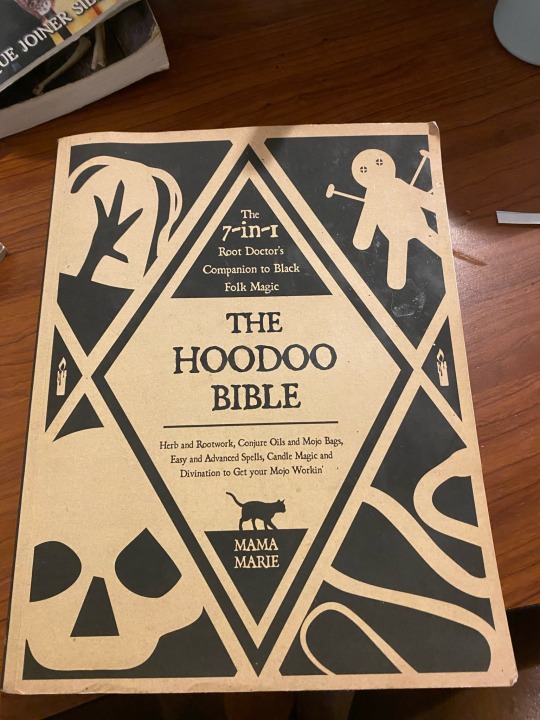
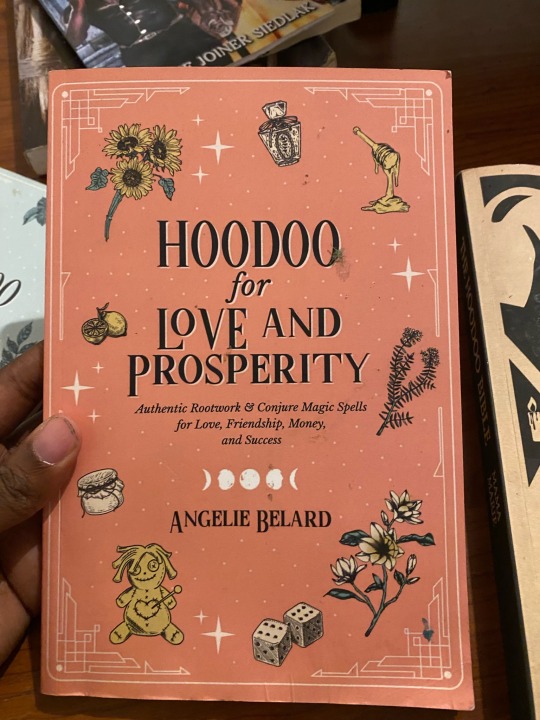
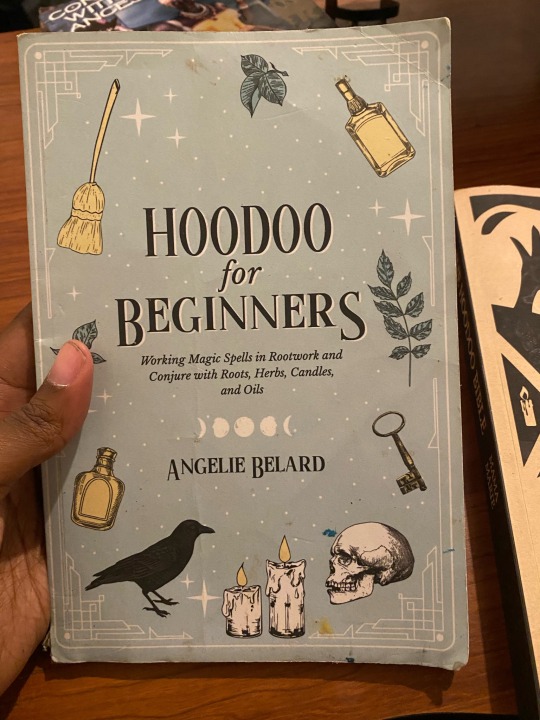
#hoodoo#hoodoo book collection#hoodoobooklist#hoodooheritagemonth#hoodoo practitioner#hoodoo information#hoodoobooks#African American#aa#african american spirituality#rootwork#boost#viral#black spirituality#trending#soulaan#souls and#african american culture
923 notes
·
View notes
Text

🌙🦋hoodoo inspired witchy moodboard✨🔮
#hoodoo#witchblr#rootwork#conjure#afro witch#black witch#bruja#moodboard#my edit#witchblr moodboard#love magic#love witch
562 notes
·
View notes
Text
Repost via @hoodoohistorian
#educational purposes#tbr list#book recommendations#hoodoo#hoodoo culture#hoodoo books#apothecary#herbalism#healing#rootwork
27 notes
·
View notes
Text

🌸The History of the Magic of Spring🌸
Greetings fellow seekers of the arcane,
As the spring season is now upon us, let's delve into all of the mystical tapestries of spring, a season that has long been revered in occult and metaphysical traditions for its potent symbolism, transformative energy, and profound connection to the cycles of life, death, and rebirth.
As we explore its numerological significance, associated deities, spirits, colors, and herbs, we shall also draw upon the wisdom of the great Renaissance magician, Cornelius Agrippa, to illuminate its deeper occult meanings.
The Occult and Metaphysical Significance of Spring
Spring is the season of renewal, a time when the Earth awakens from its winter slumber and bursts forth with life. In the grand wheel of the year, spring represents the Maiden aspect of the Triple Goddess—youth, innocence, and the promise of new beginnings. It is a time of balance, as the vernal equinox marks the moment when day and night are of equal length, symbolizing harmony between light and dark, masculine and feminine, and the seen and unseen worlds.
Metaphysically, spring is associated with the element of Air, the realm of thought, renewal, change, communication, innovation and inspiration. It is a time to plant seeds—not only in the soil but also in our minds and spirits. The energy of spring is one of expansion, creativity, and the breaking of old patterns to make way for new growth. This season invites us to align ourselves with the rhythms of nature, to shed the stagnation of winter, and to embrace the vitality of life force energy that flows abundantly during this time.
Numerology of Spring
In numerology, spring resonates with the number 3, a sacred number that embodies creativity, manifestation, and the divine trinity. The number 3 is often associated with the Maiden, Mother, and Crone; the past, present, and future; and the mind, body, and spirit. It is a number of synthesis and harmony, reflecting the balance of the equinox and the triadic nature of spring’s energy: growth, renewal, and transformation.
The number 3 also corresponds to the planet Jupiter, which governs expansion, abundance, and optimism—qualities that are deeply aligned with the spirit of spring. In magical workings, the energy of the number 3 can be harnessed to amplify intentions related to creativity, fertility, and new beginnings.

🌸Western, Eastern, South American & Indigenous Deities and Spirits of Spring
Spring is ruled by a pantheon of deities and spirits who embody its themes of rebirth, fertility, and renewal globally & culturally.
African American Traditions and Spring
African American spiritual practices, which often blend African ancestral traditions with Christian, Indigenous, and Caribbean influences, hold spring as a time of profound spiritual significance. The season’s themes of rebirth, resilience, and liberation resonate deeply within African American culture, reflecting both the struggles and triumphs of the community. In the tradition of Hoodoo, a African American folk magic system rooted in African spirituality, spring is a powerful time for rituals of renewal, cleansing, and growth. Hoodoo practitioners often perform spring cleaning rituals, both physically and spiritually, to clear away stagnant energy and invite prosperity.

This might involve sweeping the home with herbs like hyssop or basil, or using Florida Water (a traditional cologne with purifying properties) to cleanse the aura. Spring is also a time for planting roots—both literal and metaphorical. In Hoodoo, roots like John the Conqueror and High John the Conqueror are used in spells for strength, courage, and overcoming obstacles. These roots, planted in the fertile soil of spring, symbolize the resilience and determination of the African American spirit.

Spring is also a time for honoring ancestors in African American traditions. Practices such as setting up ancestor altars with fresh flowers, candles, and offerings of food or drink are common. The ancestors are seen as guides and protectors, and their wisdom is sought during this time of renewal. The blooming of flowers and the return of life to the land are reminders of the enduring presence of those who came before us. For many African Americans, gardening is also not just a practical activity but a spiritual one. The act of planting seeds, tending to the soil, and watching life emerge is a powerful metaphor for resilience and growth. This connection to the Earth is deeply rooted in African traditions, where the land is seen as sacred and imbued with spiritual energy. Spring gardening rituals often include prayers or blessings for the seeds, asking for a bountiful harvest and the blessings of the Earth.
African Traditions and Spring
In many African traditions, spring is celebrated as a time of renewal, fertility, and the return of life-giving rains. The Yoruba people of West Africa, for example, sometimes honor Oshun, the goddess of rivers, love, and fertility, who is often associated with the vitality and beauty of spring. Oshun’s energy is invoked during rituals to bring abundance, healing, and joy. Her sacred colors are yellow and gold, and offerings of honey, oranges, and sunflowers are made to her.

In ancient Egyptian cosmology, spring also aligns with the festival of Sham el-Nessim, which marks the beginning of the spring season and is celebrated with feasts, music, and offerings to the gods. The goddess Isis, who embodies the power of resurrection and renewal, is often honored during this time. Her story of resurrecting Osiris mirrors the themes of death and rebirth that are central to spring.
Indigenous Traditions and Spring
For many Indigenous peoples of the Americas, spring is a time of profound spiritual significance, marked by ceremonies that honor the Earth’s awakening. The Hopi people of the southwestern United States celebrate the Bean Planting Ceremony, a ritual that aligns with the spring equinox and involves prayers for fertility, rain, and a bountiful harvest. The Green Corn Ceremony, practiced by many Indigenous nations, is another springtime ritual that celebrates renewal and purification.

In the Andean traditions of South America, spring is associated with Pachamama, the Earth Mother, who is revered as the source of all life. Offerings of flowers, seeds, and coca leaves are made to her during rituals to ensure her blessings of fertility and abundance. The Inti Raymi, or Festival of the Sun, celebrated by the Inca, marks the winter solstice in the Southern Hemisphere (which aligns with the spring equinox in the Northern Hemisphere) and honors the return of the sun’s life-giving energy.
Latin/Hispanic/South American Traditions and Spring
In Latin America, spring is often celebrated with vibrant festivals that blend Indigenous, African, and Catholic traditions. In Mexico, the arrival of spring is marked by the Festival of Xipe Totec, the Aztec god of renewal and agriculture. Xipe Totec, whose name means “Our Lord the Flayed One,” is associated with the shedding of old skin and the emergence of new life. His rituals involve offerings of seeds and flowers, as well as dances and processions.

In Brazil, the Festival of Iemanjá, the Yoruba-derived goddess of the sea and fertility, is celebrated in February, aligning with the energy of spring in the Southern Hemisphere. Offerings of flowers, mirrors, and perfumes are cast into the ocean to honor her and to seek her blessings of abundance and protection.
Asian Traditions and Spring
In many Asian cultures, spring is celebrated as a time of renewal and the blossoming of life. In China, the Spring Festival, or Lunar New Year, marks the beginning of the agricultural year and is a time for family reunions, feasts, and rituals to honor ancestors and deities. The goddess Nuwa, who is credited with creating humanity and repairing the heavens, is sometimes invoked during this time for her creative and restorative powers.
In Japan, the arrival of spring is celebrated with Hanami, the viewing of cherry blossoms, which symbolize the fleeting beauty of life and the impermanence of all things. The Shinto goddess Konohanasakuya-hime, who is associated with flowers and volcanic energy, is honored during this time for her connection to the life force and the cycles of nature.

In India, the festival of Holi marks the arrival of spring and is celebrated with vibrant colors, music, and dance. Holi honors the divine love of Radha and Krishna and the triumph of good over evil, as well as the renewal of social bonds and the joy of life.
Caribbean Traditions and Spring
In the Caribbean, spring is often celebrated with festivals that blend African, Indigenous, and European influences. In Trinidad and Tobago, the Carnival season, which culminates in February or March, is a time of exuberant celebration, music, and dance. While Carnival does have some Christian roots, its origins can be traced all the way back to African and it's vibrant energy and themes of liberation and renewal align with the spirit of spring.

In some Afro-Caribbean traditions such as Santería and Vodou, spring can be a time to honor deities associated with fertility, growth, and the life force. Oshun (Santería) and Erzulie (Vodou) are both spirits of love, beauty, and abundance who are sometimes celebrated during this season. Offerings of flowers, sweets, and honey can be made to them to invoke their blessings.
Western Traditions and Spring
Persephone (Greek): The goddess of spring and queen of the underworld, Persephone’s return from the realm of Hades marks the arrival of spring. Her story symbolizes the cyclical nature of life, death, and rebirth.
Eostre/Ostara (Germanic): The namesake of Easter, Eostre is a goddess of dawn, fertility, and the rising sun. She is often depicted with hares and eggs, symbols of fertility and new life.
Flora (Roman): The goddess of flowers and blossoming plants, Flora presides over the beauty and abundance of spring.

Green Man (Celtic): A spirit of nature and vegetation, the Green Man represents the regenerative power of the Earth and the life force that surges through all living things.
Freya (Norse): Though often associated with love and war, Freya also embodies the fertility and vitality of spring.
These deities and spirits remind us of the sacredness of the natural world and the interconnectedness of all life. They invite us to honor the cycles of nature and to celebrate the return of light and warmth.
🌸Colors of Spring
The colors of spring are imbued with magical significance, each carrying its own vibrational energy:
Green: The color of growth, renewal, and the Earth itself. Green is associated with the heart chakra, healing, and abundance.
Yellow: The color of the sun, intellect, and joy. Yellow energizes the mind and inspires creativity.
Pink: The color of love, compassion, and new beginnings. Pink opens the heart to self-love and emotional healing.
Pastels: Soft hues of lavender, mint, and peach carry gentle, nurturing energies that support spiritual growth and inner peace.
These colors can be incorporated into rituals, altars, and clothing to align with the energy of spring and to invoke its blessings.

🌸Herbs of Spring
The herbs of spring are potent allies in magical workings, each carrying the essence of the season’s vitality:
Dandelion: A symbol of resilience and transformation, dandelion is used in spells for wishes, divination, and spiritual growth.
Nettle: A herb of protection and purification, nettle clears stagnant energy and strengthens the body and spirit.
Violet: Associated with love, healing, and intuition, violet is a sacred herb of spring that connects us to the fairy realm.
Lemon Balm: A herb of joy and abundance, lemon balm uplifts the spirit and attracts prosperity.
Elder: A tree of regeneration and protection, elder is sacred to the goddess Freya and is used in rituals of healing and transformation.
These herbs can be used in teas, sachets, or incense to harness the energy of spring and to support magical intentions.
🌸Cornelius Agrippa on the Occult Significance of Spring
Cornelius Agrippa, the renowned Renaissance magician and philosopher, offers profound insights into the occult significance of spring. In his seminal work, Three Books of Occult Philosophy, Agrippa describes spring as a time when the celestial influences of the Sun and Jupiter are at their peak, infusing the Earth with life-giving energy. He associates spring with the eastern direction, the element of Air, and the zodiac signs of Aries and Taurus, which govern new beginnings and material abundance.
Agrippa emphasizes the importance of aligning magical practices with the seasons, noting that spring is an auspicious time for rituals of growth, healing, and manifestation. He also highlights the role of the planets in shaping the energy of the season, particularly the influence of Venus, which governs love, beauty, and fertility, and Mars, which brings vitality and courage.
Agrippa’s teachings remind us that spring is not only a time of external renewal but also an opportunity for inner transformation. By attuning ourselves to the rhythms of nature and the celestial forces at play, we can harness the power of spring to manifest our desires and to deepen our connection to the divine.

🌸🌸 Conclusion 🌸🌸
Spring is a season of profound metaphysical significance, a time when the Earth awakens and the veil between worlds grows thin. Its numerological resonance with the number 3 reflects its themes of creativity, balance, and transformation, while its associated deities, spirits, colors, and herbs offer a rich tapestry of magical correspondences.
Drawing upon the wisdom of Cornelius Agrippa, we see that spring is a time to align ourselves with the celestial forces of renewal and to embrace the boundless potential of new beginnings. Additionally, when we are exploring the traditions of African Americans, Africans, Indigenous peoples, Latin America, Asia, the Caribbean and Western Europe, we gain a richer, more intersectional understanding of all of the spring’s magic.
As we walk this path of the arcane, let us always try to honor the sacred energy of spring, planting seeds of intention and nurturing them with love, wisdom, and gratitude.
For in the cycle of the seasons, we find the eternal dance of life, death, and rebirth—a reminder that we, too, are part of the great cosmic web.
Blessed be, dear seekers. May the magic of spring this year always guide you on your journey.
xx
Lyonessa Hart🌸
#spring#springtime#early spring#spring equinox#hoodoo#african american#africa#asia#carribean#haitianvodou#conjure#rootwork#wicca#pagan#witches of color#green witch#green witchcraft#baby witch tips#witchblr#venus#persephone#Ostara#pagan community#Freya#Flora#Green man#greek mythology#Air#Oshun#Erzulie Freda
64 notes
·
View notes
Text
lazy hoodoo tip: I'm making sweet potatoe pie from the Bress 'n' Nyam cookbook and it calls for cinnamon and nutmeg. Both are good for abundance and prosperity so you might as well add a lil juju and bake with intention.

Also, Bress 'n' Nyam is a dope cookbook to add to your collection. It's full of great Gullah Geechee recipes and I haven't had a recipe miss yet.
#hoodoo#conjure#rootwork#african traditional religions#lazyhoodoo#abundance#prosperity#luck#money#kitchen witch#baking#soul food#gullah geechee
35 notes
·
View notes
Text

According to Dr. Yvonne Chireau, "Hoodoo is an African American-based tradition that makes use of natural and supernatural elements in order to create and effect change in the human experience."
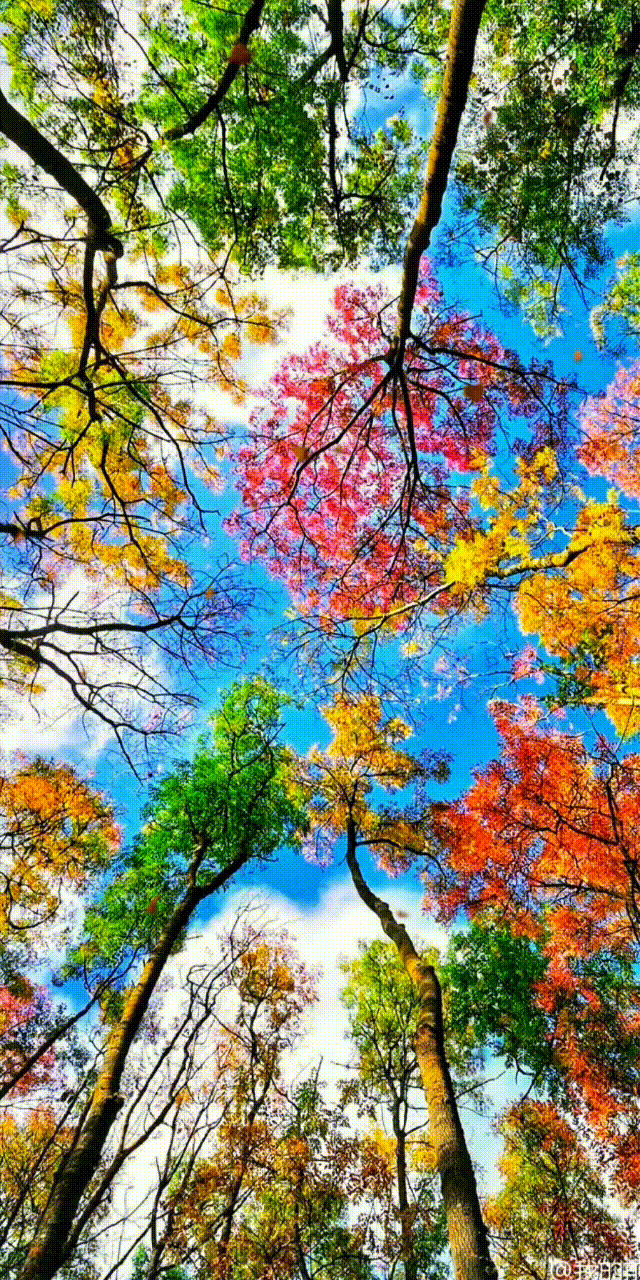
Hoodoo was created by African Americans, who were among over 12 million enslaved Africans from various Central and West African ethnic groups being transported to the Americas from the 16th to 19th centuries (1514 to 1867) as part of the transatlantic slave trade. The transatlantic slave trade to the United States occurred between 1619 and 1808, and the illegal slave trade in the United States occurred between 1808 and 1860. Between 1619 and 1860 approximately 500,000 enslaved Africans were transported to the United States.
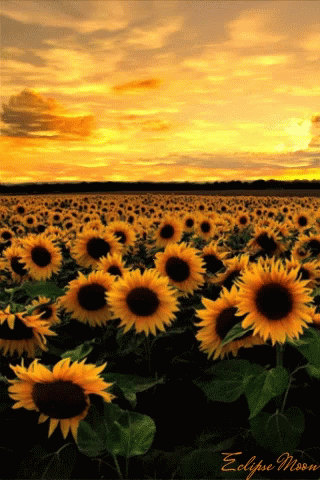
From Central Africa, Hoodoo has Bakongo magical influence from the Bakongo religion incorporating the Kongo cosmogram, Simbi water spirits, and Nkisi and Minkisi practices. The West African influence is Vodun from the Fon and Ewe people in Benin and Togo following some elements from the Yoruba religion. After their contact with European slave traders and missionaries, some Africans converted to Christianity willingly, while other enslaved Africans were forced to become Christian which resulted in a syncretization of African spiritual practices and beliefs with the Christian faith.
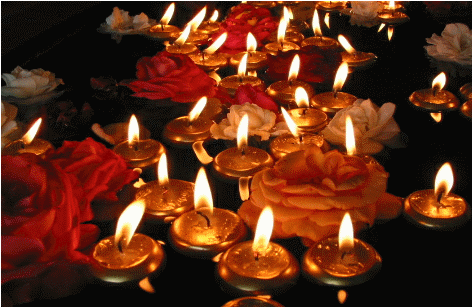
Enslaved and free Africans learned regional indigenous botanical knowledge after they arrived to the United States. The extent to which Hoodoo could be practiced varied by region and the temperament of the slaveholders. For example, the Gullah people of the coastal Southeast experienced an isolation and relative freedom that allowed retention of various traditional West African cultural practices. Gullah people and enslaved African-Americans in the Mississippi Delta, where the concentration of slaves was dense, Hoodoo was practiced under a large cover of secrecy. The reason for secrecy among enslaved and free African Americans was that slave codes prohibited large gatherings of enslaved and free African people. Slaveholders experienced how slave religion ignited slave revolts among enslaved and free African people, and some leaders of slave insurrections were African ministers or conjure doctors

#african#afrakan#kemetic dreams#africans#brownskin#afrakans#brown skin#african culture#afrakan spirituality#bakongo#congo#conjure#ancestor veneration#rootwork#hoodoo#nkisi#simbi#botanical#botanic garden#gullah#gullah geechee#gullah gullah island#mississippi#mississippi delta#slave codes#vodun#cosmogram#yoruba#america#african american
232 notes
·
View notes
Text

116 notes
·
View notes
